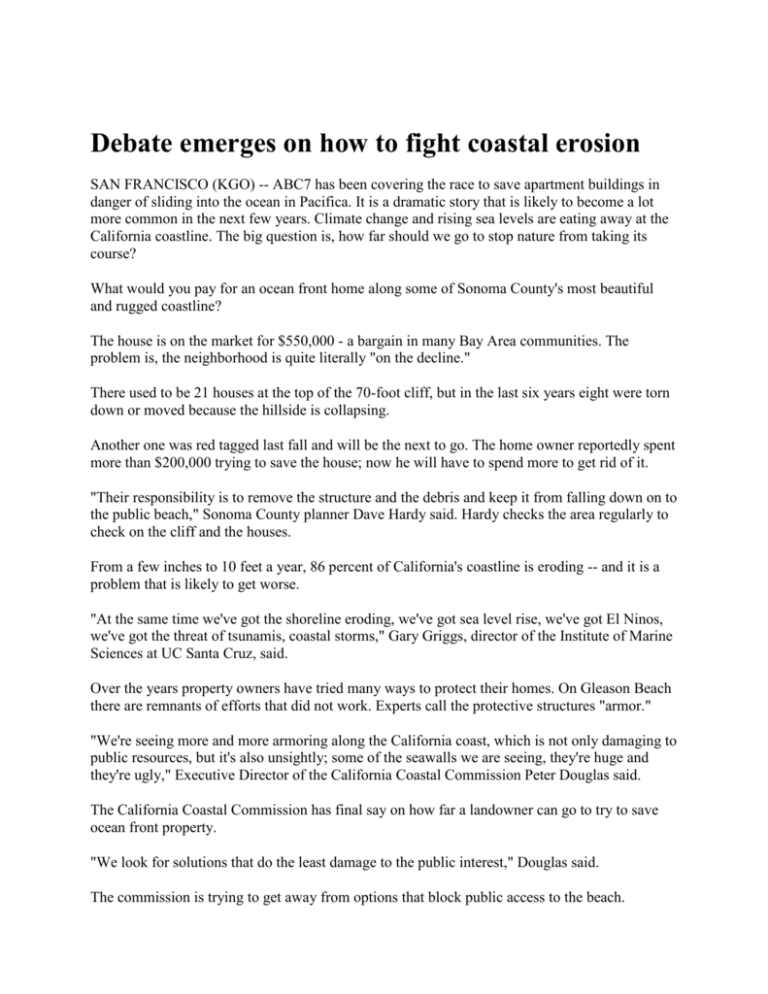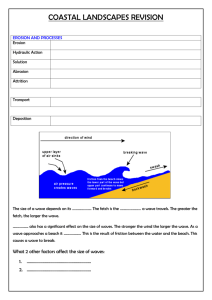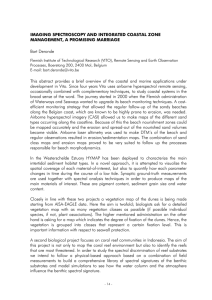
Debate emerges on how to fight coastal erosion
SAN FRANCISCO (KGO) -- ABC7 has been covering the race to save apartment buildings in
danger of sliding into the ocean in Pacifica. It is a dramatic story that is likely to become a lot
more common in the next few years. Climate change and rising sea levels are eating away at the
California coastline. The big question is, how far should we go to stop nature from taking its
course?
What would you pay for an ocean front home along some of Sonoma County's most beautiful
and rugged coastline?
The house is on the market for $550,000 - a bargain in many Bay Area communities. The
problem is, the neighborhood is quite literally "on the decline."
There used to be 21 houses at the top of the 70-foot cliff, but in the last six years eight were torn
down or moved because the hillside is collapsing.
Another one was red tagged last fall and will be the next to go. The home owner reportedly spent
more than $200,000 trying to save the house; now he will have to spend more to get rid of it.
"Their responsibility is to remove the structure and the debris and keep it from falling down on to
the public beach," Sonoma County planner Dave Hardy said. Hardy checks the area regularly to
check on the cliff and the houses.
From a few inches to 10 feet a year, 86 percent of California's coastline is eroding -- and it is a
problem that is likely to get worse.
"At the same time we've got the shoreline eroding, we've got sea level rise, we've got El Ninos,
we've got the threat of tsunamis, coastal storms," Gary Griggs, director of the Institute of Marine
Sciences at UC Santa Cruz, said.
Over the years property owners have tried many ways to protect their homes. On Gleason Beach
there are remnants of efforts that did not work. Experts call the protective structures "armor."
"We're seeing more and more armoring along the California coast, which is not only damaging to
public resources, but it's also unsightly; some of the seawalls we are seeing, they're huge and
they're ugly," Executive Director of the California Coastal Commission Peter Douglas said.
The California Coastal Commission has final say on how far a landowner can go to try to save
ocean front property.
"We look for solutions that do the least damage to the public interest," Douglas said.
The commission is trying to get away from options that block public access to the beach.
Debate emerges on how to fight coastal erosion
Page 2 of 2
And some sea walls actually make the erosion worse. If a wall stops a sandy cliff from
crumbling, the beach does not get new sand, so over time, it may get smaller. Then the waves
will come even closer to the property being protected.
If the commission to allow a sea wall, the next looming question is, "who pays?"
A new $6 million wall is going in at Pleasure Point in Santa Cruz. It is a county project built with
public money because the wall is protecting a street and the underlying utilities.
But at the point where a private house sticks out, the wall will stop, and then start again on the
other side.
"This particular wall is sort of a new generation where we try to make walls look like natural
rock," Griggs said.
It took eight years of debate to agree on the plan. It is a "soil nail" wall with construction similar
to what is being tried on the Pacifica cliffs where crews are trying to save several apartment
buildings.
The construction crews rush to do the work at low tide; when high tide moves in, it becomes
obvious why the wall is so necessary.
But back at Gleason Beach, the cliffs are a lot higher and the property is privately owned, so
there is little chance of a similar wall going in here.
The type of rock and sand under each house varies, so some may last longer than others.
But if you want to buy property on the coast, Griggs says you should do your homework.
"I think anybody buying on the coast today is buying a temporary piece of property," he said.
The California Coastal Commission is so concerned about rising sea level and continued beach
erosion that it will not approve any new building that requires a seawall to protect it from the
waves. The owner will be told to either move the project farther away from the water or it give
up.
Written and produced by Jennifer Olney
(Copyright ©2010 KGO-TV/DT. All Rights Reserved.)












